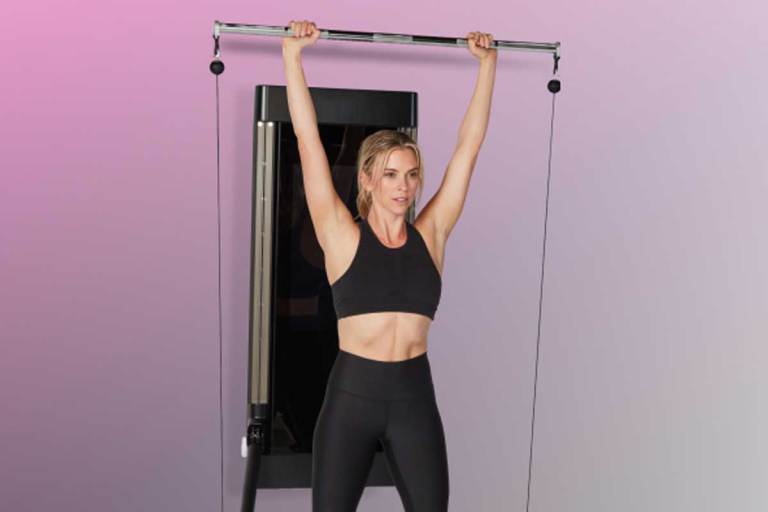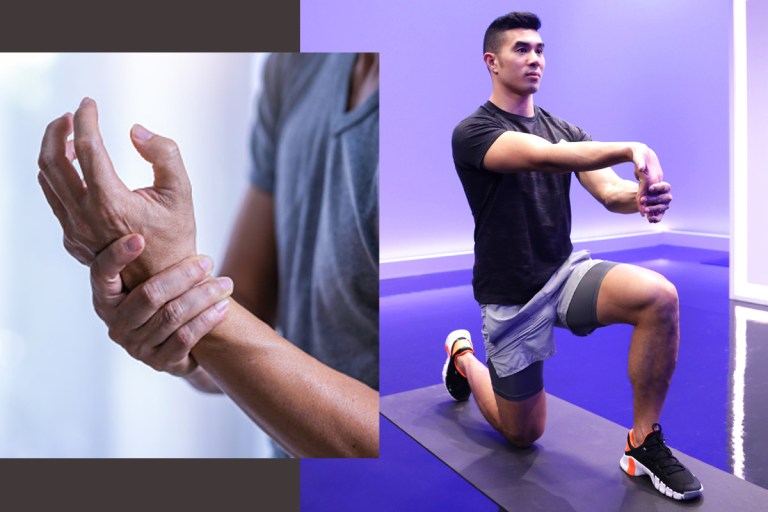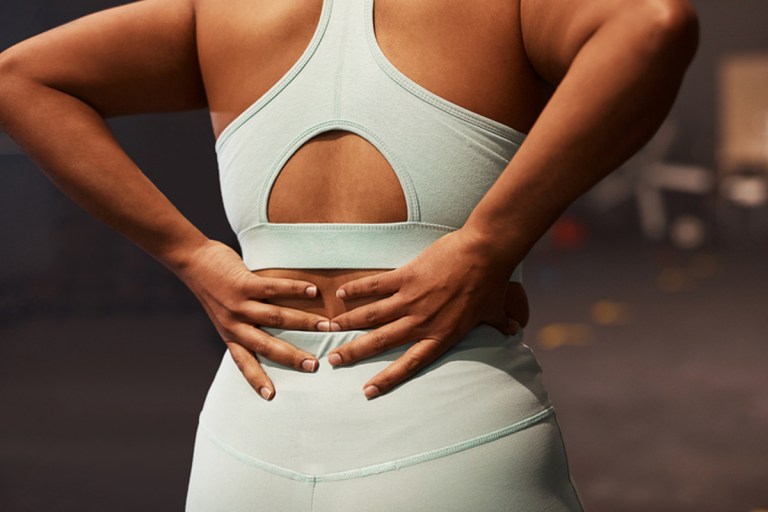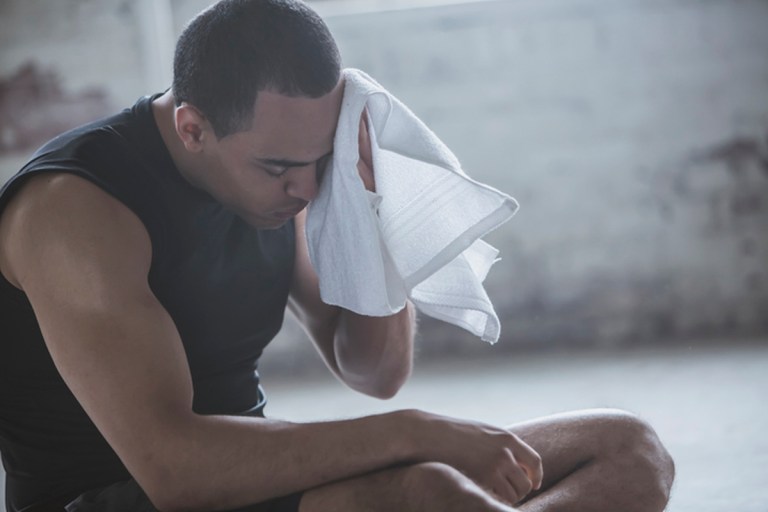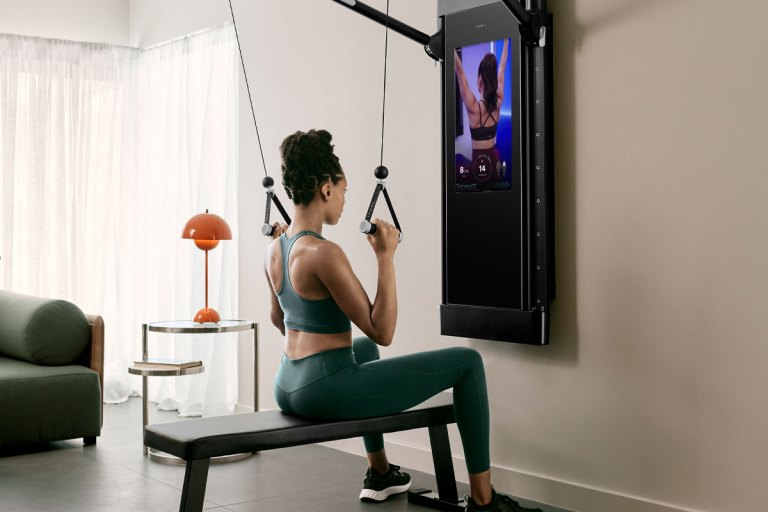No Pain, All Gain: How to Avoid Cable Burn, Calluses, and Other Lifting Aches
Feel the burn in your muscles, not on your skin.

A challenging workout can push your limits and leave your muscles sore, but it shouldn’t cause you any unnecessary pain or discomfort. Yet, during the course of your fitness journey, you might encounter some common workout aches and pains including calluses, cable burns, or sore shoulders in barbell front squats. Fortunately, most of these have easy solutions that will make your workouts more enjoyable.
Here’s a rundown of some of the most common workout aches and pains, and how you can fix them so you can keep your training momentum going.
Cable Burn
When working out with cables, it’s not unusual to develop red spots or light brush burns where the cables rub against your skin. It often occurs during movements such as bench presses, overhead presses, and incline chest presses. According to Tonal movement specialist Shelby Hicks, this is especially common if you have broader shoulders.
When this happens during pressing exercises, you might be flaring your elbows out too much, says Troy Taylor, Senior Director of Performance at Tonal. “If you tuck your elbows in, that actually pushes your shoulders into a stronger and safer position, then you’ll tend to get less burn,” he says.

With Tonal’s adjustable arms, you can change the position of the cables to find one that won’t rub if tucking in your elbows doesn’t provide relief. During pressing exercises, Hicks recommends rotating the arms outward one click (using the round button). Tonal coach and certified personal trainer Tim Landicho agrees that “one click makes a difference.” If the cables are rubbing your arms in triceps kickbacks, resisted dead bugs, or pullover crunches, Hicks says to rotate the arms inward an extra click instead.
If you experience cable rubbing with the standing alternating push-pull exercise, Hicks recommends standing one step closer to Tonal, while leaving the arms in the recommended position. When all else fails, you can always throw on a long-sleeve shirt or arm sleeves for an extra layer of protection.
Calluses
For some, developing calluses from lifting heavy weights is a rite of passage and a symbol of accomplishment. Calluses thicken the skin on your hand and ultimately protect it as you keep lifting heavy. “Once they develop, it actually leads to less pain down the line,” says Landicho.
However, calluses can be painful or unsightly annoyances. In that case, Landicho says you can use a pumice stone to soften calluses. Soak your hands in water first and then gently rub the pumice stone over your calluses to remove dead skin.
In general, Landicho recommends lifting bare-handed as it enhances grip strength. However, if calluses are becoming a significant issue that’s preventing you from lifting, you can use fingerless gloves. “I would rather have you deadlift and wear gloves than not deadlift at all,” he says.
Some weightlifters use chalk to get a secure grip without risking calluses. For a less messy option, Taylor recommends liquid chalk, one of his own home gym essentials. “It stops the bar from slipping and rubbing against [your hands] quite as much,” he says.
Hand Pain from Heavy Lifting
In lower-body exercises such as goblet squats and deadlifts, it’s typical for your glute and leg strength to progress faster than your grip strength. Even if you have the strength to deadlift 100 pounds, a weak grip could make the movement more challenging.
For barbell deadlifts, Hicks and Landicho both suggest trying an alternate grip on the bar, with one palm facing you and one facing away.

If that doesn’t work, or if you’re focusing on handle moves, there are two paths you can take: working on your grip strength or using lifting straps that connect your hand and wrist to the weights to ease the pressure on your grip. Which one you choose will depend on your goals. As Landicho says, “It’s not just about the exercise in a vacuum. It’s what’s the intention of this exercise in this program.”
For example, if you’re doing a hypertrophy program where the goal is to lift as much volume as possible and build bigger lower-body muscles, Landicho says, “I would want someone’s legs to still be able to receive the stimulus and not have grip be an issue.” Therefore, he’d have no problem if you want to use lifting straps since grip strength is not your primary goal.
Taylor agrees, noting that some of the world’s top lifters use straps when doing extremely heavy deadlifts. “By using straps, you’re essentially taking away the limit of your grip strength, but allowing your glutes and legs to work,” he says.
That said, if you’re in a get lean or improve fitness program where you’re not trying to accumulate as much weight as possible, Landicho says, “I would actually be more in favor of letting your grip catch up to your legs.” In these workouts, it’s often important to maintain a certain pace to stimulate metabolic adaptations or improvements in endurance and work capacity. The time spent putting on and taking off lifting straps could slow you down to the point where you’re missing out on those benefits. You might also be lifting lighter weights for more reps in these workouts, so grip strength may be less of a limiting factor.
Additionally, Taylor says if you want to gain functional fitness and improve your ability to lift heavy objects off the ground in everyday life, you’ll need that grip strength. To build it up, Landicho recommends practicing the farmer’s march or suitcase march exercises that take out the lower body factor and emphasis working on your grip.
Shoulder Pain During Barbell Front Squats
Finding a comfortable position for the barbell front squat can be a little challenging, especially if you’ve never done this exercise before. Part of the issue could simply be getting used to the movement. “Even if you are doing this as correctly as possible, there is a little bit of a learning window where there will still be some discomfort,” says Landicho.
Your first step, though, should be locking down the correct form. To do so, Landicho suggests trying to balance the barbell (without any resistance) on the top of your shoulders with your arms extended. “You want to find a position where, even if your hands weren’t helping, you could still keep it balanced,” he says. “We want to create a shelf, and the shelf is going to be on the [shoulder] muscle.” Hicks adds to look for “the meaty part of the front of the shoulder.”

Once you’re able to balance the barbell on your shoulders standing up straight, try descending through the squat movement, still with your arms extended, to see if you can keep your chest upright and the bar balanced. “Without that ‘chest up’ accountability, people will start to dip forward or start to lean forward too much and it’s that rolling forward of the bar that causes a lot of pain,” says Landicho. “Once you find that [balance], then it’s just a matter of placing the hands in for support and letting them be an extra guardrail as you descend.”
As an additional check, Hicks suggests activating Smart View in workouts with this exercise. Positioning the barbell too far forward or backward can throw off your form, so if Smart View confirms your form is on point, you’re likely holding the bar correctly.
If you still can’t find a comfortable position, Taylor says there’s nothing wrong with using Tonal’s movement replacement feature to swap in a move you feel more confident with, such as the racked squat.
Hip or Back Pain During Bulgarian Split Squats
The Bulgarian split squat is notorious among Tonal members for challenging lower-body strength and balance. While this movement should get your muscles burning, it shouldn’t cause any pain in your knees or back.
Similar to the barbell front squat, this is another exercise where finding the right starting position can make a big difference. Often, Landicho says, people position the bench too far back, which leads to arching in the back and too big of a stretch in the back hip.
“You want to find a distance from the bench that allows you to keep your front foot planted while keeping your hips tucked,” he says. To quickly find your starting spot, he says to sit on your bench with your legs extended straight out on the floor in front of you. Then, simply start with your front foot on the spot on the floor where your feet land.
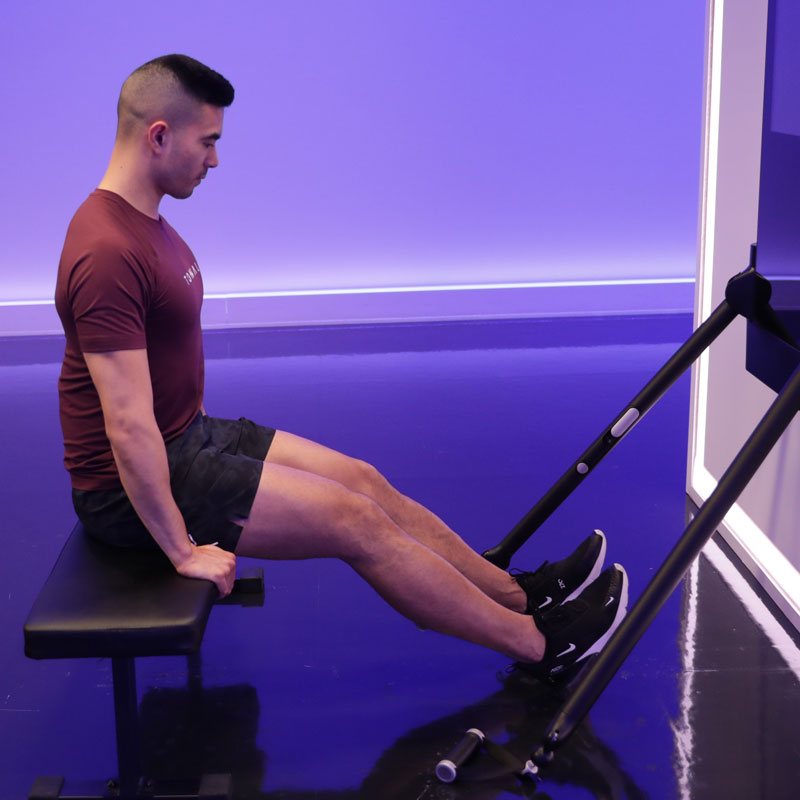
This is also another move you can try with Smart View activated to check your form. Once you’re positioned correctly, you’ll be able to rep out your squats without any pain—except for some healthy fire in your quads.
Wrist Pain During Pushups
Pushups can be difficult, but wrist pain can make the movement even more challenging than necessary. It’s one of the most common workout aches and pains lifters experience. Landicho explains that this is typically a result of a limited range of motion in your wrist joints or overloading the wrist joint with more volume than you’re ready for.
First, check your form. Your hands should be directly under your shoulders, with your weight evenly distributed between your palms and all 10 fingers. “It’s almost like you’re suctioning the floor to your hand,” says Landicho. This creates a stable base for your pushups.
To build range of motion in your wrists, you’ll want to practice positions that put your wrist into extension (in which you bend at the wrist, moving the back of your hand toward your forearm). You can do a simple wrist extension by using your opposite hand to pull your fingers back toward your forearm, or practice on the ground in a quadruped position with your fingers pointed toward your knees.
As you work up to doing full pushups, try modifications that are easier on your wrists. Pushups on your fists keep your wrists in a neutral position, while pushups with a thin towel under your palms decrease the degree of wrist flexion.
The Bottom Line
Don’t panic if you’re experiencing any of these common workout aches and pains. These are very typical when lifting weights and aren’t a sign that you’re doing anything wrong. Instead of giving up your exercise habit completely, try the fixes above to find one that works for you. Keep in mind that you should feel the burn in your muscles when you lift, but you shouldn’t be in actual pain. Don’t hesitate to modify an exercise or take a step back if it doesn’t feel right.
The information provided in this article is for educational and informational purposes only. Individuals with pre-existing health conditions, injuries, or concerns should consult with their healthcare provider before trying a new exercise or nutrition regimen.
